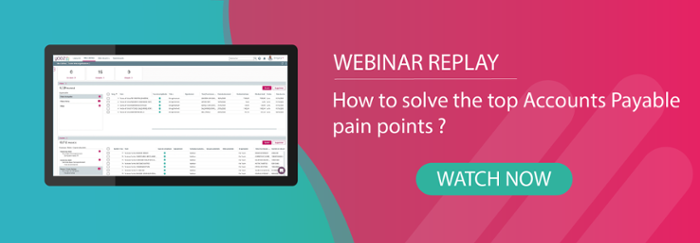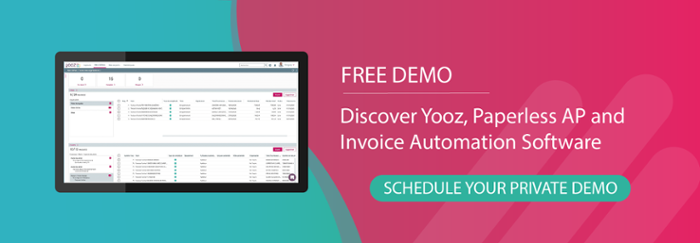A company operating in today’s digital world are facing more unforeseen challenges at a faster rate than ever before, a rate that only increases each year. Whether it’s a global pandemic and working with remote employees or a talent shortage and frustrations from a lack of tech skills, businesses are having to invest more in the support around them - including their tech stack.
One major area of importance is the finance department, where a lack of digital tools and technology is hurting the ability of teams to streamline and optimize processes. Specifically, accounts payable automation and automated invoice processing. For example, a recent survey found a quarter of UK businesses can take up to seven days to process a supplier invoice with an average processing time of around 33 hours.
For those business that fully embraced modernization early on, automation technology has replaced time-consuming, labor-intensive tasks. This in turn freed up staff time for more strategically driven work while also greatly reducing the risk of human error or fraud. While businesses have delayed switching to automation for several reasons, these types of benefits are simply becoming too hard to ignore any longer.
What is automated invoice processing?
More and more businesses are using accounts payable (AP) automation software - either as a standalone solution or integrated into their accounting or ERP software systems - to reduce invoice management costs, improve cash flow, and achieve complete visibility of spending. However, it’s important to remember that automated invoice processing software is not to be confused with billing and/or invoice management systems. The key difference here is that while invoice processing focuses exclusively on purchasing transactions and incoming supplier invoices, billing and invoicing management software manages both sales and purchase invoices.
Automated invoice processing systems extract and capture invoice data - such as supplier address, quantity of items ordered, and total cost - and record the information in the user’s ERP or accounting system. Once recorded, automated workflows manage the three-way matching process (double checking that information is correct and not duplicated by cross-referencing the invoice with purchase orders and receipts) and approval process in the background, all without a single button being pressed by the accounts payable team. It’s really that simple, and while incredibly useful for teams having to deal with hundreds of invoices coming in every month, this is just the tip of the iceberg.
Organizations typically use invoice processing automation software to manage huge volumes of invoices - hundreds or thousands received every month - and financial transactions between the businesses and its suppliers. Many solutions work in accordance with existing ERP or accounting systems which, while they could include accounts payable features, don’t provide the same level of functionality that you get from a standalone solution needed to manage large volumes of invoices and more complex processes.
How does AP automation eliminate manual data entry?
Invoices come from many different sources including email, paper documents, and even instant messaging platforms. They can arrive in various and different formats such as Word documents or PDFs. Then, although it may sound unbelievable now, the traditional way of dealing with these invoices was to manually add in all the relevant information into the corresponding fields, typically in a spreadsheet format. Not only was this an incredibly time-consuming process it also led to plenty of errors. Imagine, just one slip of a computer key can mean another zero added onto the price (and some invoices are much harder to read than others).
However, using AP invoice processing automation removes these manual processes (typically mundane yet critical) and replaces them with software workflows that are designed to be smart, accurate, and fast. Utilizing not one but several different technologies, the software combines them to build out a complete, end-to-end automated AP process that begins with the capture.
The data capture is the first step and utilizes Optical Character Recognition (OCR) technology, which quite literally turns a picture into a thousand words (or less) by digitally converting images of typed, printed, or even handwritten text into machine-readable information. One simple scan of an invoice through an OCR system can help speed up manual data entry at the point an invoice is received, but as mentioned above, this on its own isn’t enough to provide complete AP invoice processing automation. Only when combined with smart data extraction (transforming the text into relevant data), and machine learning (remembering the data and populating it into the applicable data fields each time the data is recognized) can accounts payable teams really see a difference.
Smart data extraction makes sense of invoice data extracted by OCR and transforms it into relevant, usable information - all in real-time and without having to outsource to a third-party for validation. From there, Machine Learning and Artificial Intelligence (AI) technology take the invoice information and figure out where in the ERP or accounting system it needs to be recorded, what information needs to be included, and even learns from each invoice that is processed.
Cloud solutions add a protective layer to the process, digitally recording invoices and financial documents and storing them in a secure location, while also providing an easily accessible, simple-to-use tool. While allowing departments to go fully paperless, a keyword search function also means invoices can be brought up within seconds, while accounts payable teams can work anywhere, anytime, and on any device.
What are the benefits of AP invoice processing automation?
Although businesses don’t just invest in AP invoice processing automation to reduce the amount of manual work their staff have to sift through, it’s not just within the accounts payable department that witness the advantages of automation. CFOs and financial directors also stand to gain from faster, more accurate AP processes, and there are plenty of benefits besides simply freeing up staff time from dull, repetitive tasks. In fact, when sourcing automated accounts payable solutions, UK finance leaders are primarily looking to reduce errors (35%) and costs (30%), although refocusing staff time (29%) is third on the priority list just above better financial control (28%), according to one survey.
The most obvious advantage of AP invoice processing automation is the minimal human intervention involved, eliminating unnecessary and time-consuming manual data entry and invoice validation that only introduce risk, errors, and inefficiencies. Manually handling invoices includes too many steps that require humans to intervene, lengthening the process of paying an invoice, validating the invoice, and approving the payment. Full AP invoice processing automation can help eliminate all these steps.
Speed is another obvious benefit of automated invoice processing tools, removing the time taken to enter, scan, and validate invoice data manually. But the pace in which automation can provide AP departments can also result in significant cost savings and return on investment (ROI) - and fast. Depending on the volume of invoices received every month, the size of the accounts payable department, and the complexity of the business’ AP processes, AP invoice processing automation can be provided relatively cost-effectively. Plus, as it’s delivered through the cloud, it makes it easy and pain-free to implement, even integrating with most accounting and ERP systems while being readily accessible from any location.
Because the workflows utilize Machine Learning and AI technology, the automated solution can provide more accurate invoice data while also learning and improving processes the more invoices it receives and processes. Invoices are automatically matched with purchase orders and receipts, removing the risk of businesses making inaccurate or even fraudulent payments, improving overall security and even communication with vendors.
Also, as the number of invoices received every month can increase and decrease at any given time, AP invoice processing automation provides a level of scalability that works around businesses, not the other way around. Businesses might require thousands of invoices to be processed one month, while a slow period might only see the need for a dozen. AP automation delivered through the cloud can help deal with any changes in scale without the need to invest in additional staff, technology, or training.








